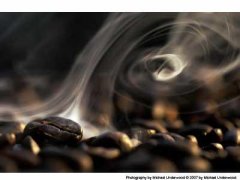The most traditional Arabica coffee variety, Rabica.

Arabica bean
Scientific name coffea arabica (Arabica bean)
Family and genus: coffee genus of Rubiaceae
Coffee trees can be divided into two main varieties: Arabica (coffea arabica) and Robusta (coffea robusta/coffea canephora) (rare on the market).
Arabica (Coffea arabica) is the most traditional Arabica coffee variety. Originally from East Africa, coffee was monopolized by the Arab world for a long time before the 15th century, so it was called "Arabian coffee" by Europeans.
It turned out that all the commercial coffee in the world were small-grain coffee, but at the end of the 19th century, there was a large-scale disease, and growers began to look for other disease-resistant varieties. At present, small-grain coffee is still the main variety of coffee, accounting for about 3% of the world's total coffee output. It is mainly grown in Latin American countries, but also partly in Indonesia and the Pacific islands. At present, the geographical and climatic conditions of Brazil, the largest coffee producer in the world, are very suitable for the growth of small fruit coffee, and the main coffee varieties planted are also small grain coffee. Brazil's coffee production accounts for more than 1 inch of the world's total output.
The fruit of small-grain coffee is smaller than that of medium-grain coffee and large-grain coffee. The berries are oval and generally contain two seeds, the so-called "coffee beans".
Subspecies:
The three early subspecies in the Arabica species (Coffea arabica) series are ∶ blue mountain subspecies (varietal Blue Mountain), Tibica subspecies (varietal Typica) and Bourbon subspecies (varietal Bourbon). Jamaica Blue Mountain is recognized as the best coffee in the world. Tibica coffee, which is native to Ethiopia and southeastern Sudan, is the most widely cultivated variety of coffee in the Western Hemisphere and has a higher yield in Hawaii. Hawaii Kona is on a par with Blue Mountain coffee, with a price difference of only $1 to $3. The bourbon subspecies was introduced to America by French immigrants in the 18th century from the island of Island of Bourbon (today's French island of Reunion in the Indian Ocean east of Madagascar). It is now widely cultivated in the Western Hemisphere, such as Brazil, and a small amount in Yunnan, China. The caffeine content of Bobang subspecies is 20% to 30% higher than that of Tibica subspecies, but less than most coffee subspecies. At first, the main branch and trunk grew upward at 45 degrees, and with the fruit load, the lateral branches were denser, the fruit was more, and the yield was higher. But the berries are smaller and ripen faster, so they are not resistant to strong winds and heavy rain. Bourbon coffee is a variety of small-grain coffee second only to Tibica. It has more fruit and higher yield, but smaller berries and slower ripening.
The small-grain coffee grown in Yunnan, China is mainly Tibika and Bobang subspecies. From the botanical point of view of coffee, Yunnan small-grain coffee is genetically close to the best blue mountains of Jamaica (Jamaica Blue Mountain) and Kona of Hawaii.
Important Notice :
前街咖啡 FrontStreet Coffee has moved to new addredd:
FrontStreet Coffee Address: 315,Donghua East Road,GuangZhou
Tel:020 38364473
- Prev

How much do you know about coffee, boutique coffee?
Coffee (Xoffea arabica Linn) coffee is a perennial evergreen shrub or small tree of Rubiaceae. It is a horticultural perennial cash crop with the characteristics of fast growth, high yield, high value and wide market. Wild coffee trees can grow to a height of 5 to 10 meters, but coffee trees planted on the manor are often cut to less than 2 meters in order to increase their fruit and facilitate harvesting. Coffee
- Next

The fresh-keeping method of ground Coffee Powder
Curry friends can now easily buy their favorite coffee beans through online shopping, and most of the coffee beans on sale are provided with grinding service, so how to keep the coffee powder fresh? Let's talk about the fresh-keeping methods of ground coffee powder. Coffee powder should be stored in a dry, cool place, remember not to refrigerate in the refrigerator, this will cause coffee powder moisture, below
Related
- Beginners will see the "Coffee pull flower" guide!
- What is the difference between ice blog purified milk and ordinary milk coffee?
- Why is the Philippines the largest producer of crops in Liberia?
- For coffee extraction, should the fine powder be retained?
- How does extracted espresso fill pressed powder? How much strength does it take to press the powder?
- How to make jasmine cold extract coffee? Is the jasmine + latte good?
- Will this little toy really make the coffee taste better? How does Lily Drip affect coffee extraction?
- Will the action of slapping the filter cup also affect coffee extraction?
- What's the difference between powder-to-water ratio and powder-to-liquid ratio?
- What is the Ethiopian local species? What does it have to do with Heirloom native species?

